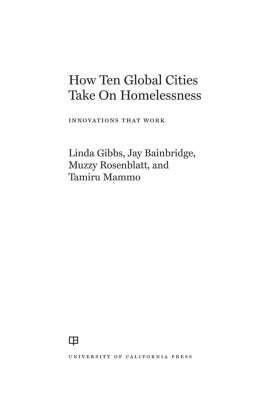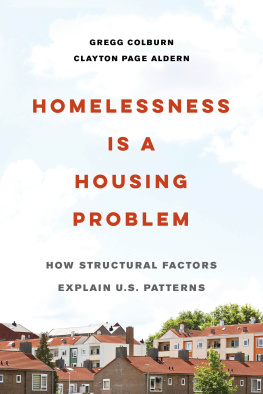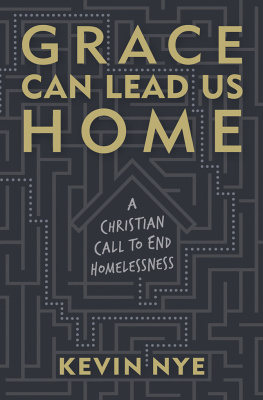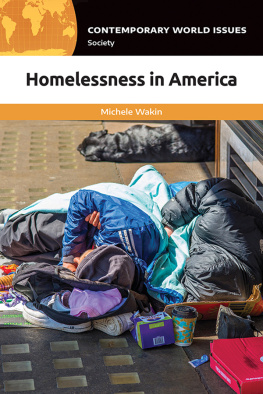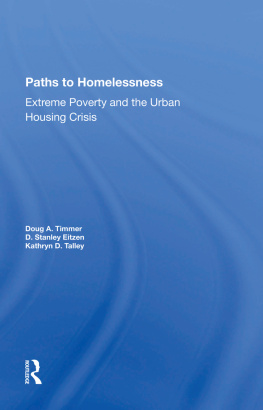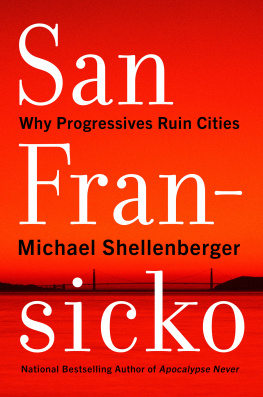Prologue
Growing up in culturally and socioeconomically diverse Long Beach, California, I spent a good deal of time skateboarding in parking lots, alleys, parks, and schoolyards. It was the 1980s, and I saw more and more people living in these public spaces. They seemed to be victims of all the inequalities and contradictions of contemporary urban society I heard about in the constant stream of punk rock, hip-hop, and reggae music that filled my ears. Also, they seemed worthy of all the compassion stressed at St. Barnabas Catholic Church, where on any given Sunday my brother and I were likely to be serving as altar boys. Homelessness had also become a national concern and had received ample coverage in mainstream news and even presidential politics.
My more direct confrontation with homelessness came as a college student. As part of a service and scholarship program of the Center for Social Concerns at the University of Notre Dame, I was assigned to work and live for a summer at the Midnight Mission in Los Angeless Skid Row district in 1992. The student volunteer from the previous year tried to persuade program administrators and me to halt work there because the Mission and Skid Row were too dangerous. This only piqued my interest, and a few weeks later I got off a Blue Line train at the 7th and Metro station in downtown Los Angeles and walked east across Broadway, Spring, and Main streets to the old Midnight Mission at 4th and Los Angeles streets. After spending daytime hours in the Missions dayroom distributing bed tickets and clothing and helping serve meals to hundreds of people, I would try to refresh myself in a dimly lit locker-room style shower. A few feet away, men coming in directly from the streets would be body-checked for lice and contagious diseases. I would sleep on an iron cot with a thin mattress in the second floor dorm with about one hundred men in various stages of homelessness. We were summarily woken at six every morning by the loud banging of a metal flashlight on the foot of the cot frame.
These arrangements took a while to get used to, but those whom I lived and worked alongside at the Mission befriended, protected, and impressed me. Al, a massive middle-aged man with a gentle character, once saved me from a flying metal trashcan thrown amid a nasty fight in the dayroom. But what left a deeper impact were our conversations in the early evenings as he ironed his dress shirt while getting ready to head to a large weekly twelve-step meeting across town in upscale Brentwood. He would talk about his focus on keeping his heroin addiction in check in order to find a job so he could reunite with his son, his ultimate goal. Tony, a street-smart man in his early thirties who ran the dayroom, amused me with constant jokes as we worked but moved me with his keen eye for those with immediate, pressing needs and a willingness to bend the rules if he felt it was truly beneficial. Jermaine was younger and wilder. After only a few weeks of being on staff, he relapsed on crack cocaine and made the move back to client. But others ostracized him, and he was ashamed, so he went over to the nearby Union Rescue Mission. It was these experiences at the Midnight that made me want to develop some professional capacity to help create better solutions to address homelessness as a social problem. I knew that passing out food, providing beds, and employing people who were formerly on the streets to deliver these services did help a few like Al and Tony attain some financial and housing stability in preparation to move on with their lives. But I also knew there were many others like Jermaine who fell through the cracks.
My time in Skid Row in the early 1990s also served as an unexpected boon to another interest that I thought at the time to be quite distant and unrelated to homelessness. A few years before, I began studying Japanese through the Center for International Commerce Program at Long Beach Polytechnic High School. Then in college I double majored in government and Japanese and spent a year as an exchange student at Nanzan University in Nagoya, Japan. After graduating amid a dismal job market in 1993, I preferred the Midnight Mission to my parents new home in the distant suburbs of Los Angeless sprawl. Back in Skid Row, I was able to continue my study of Japanese by skateboarding a few blocks to Little Tokyo to participate in a free conversation exchange supported by the Los Angeles Unified School District. A few months later, I learned that my application for a Japanese Ministry of Education fellowship had been accepted and that I would spend the following year at Nagoya University, furthering my study of Japanese language and culture. While spending late nights skateboarding in parks under the highway near sukannon temple and around the downtown shopping districts of Sakae, I came to know some of the middle-aged men who were seeking refuge in these public spaces as the Japanese economy sputtered and unemployment increased. Seeing encampments and soup lines reminded me of Skid Row, albeit without the open illicit drug use and with much less violence. When given the assignment of conducting a graduate-level research project entirely in Japanese, I elected to focus on the causes of rising homelessness in Nagoya as well as the public- and private-sector response. I got involved with an informal volunteer group led by a Christian minister and activist named Matsumoto-san, and I participated in weekly patrols. A few years later, while a master of arts student in sociology at historically black Howard University, I was able to go back to Japan to conduct brief ethnographic fieldwork on homelessness in Kobe after the Great Hanshin Earthquake of 1995. As in Skid Row L.A., I was moved, impressed, and motivated by those I encountered in the public spaces of Nagoya and Kobe. Their stories defied the images of laziness in the media and claims of lack of morality from Japanese I met outside the volunteer group.
Upon my return to the United States, I was fortunate to land a job at Shelter Partnership, Inc., a Los Angeles nonprofit organization (NPO) that addresses policy issues related to homelessness. In addition to researching how emerging welfare reform policies affected homelessness, I became increasingly aware of the limitations of shelters and short-term, time-limited housing in reducing homelessness, even amid the extended economic growth of the late 1990s. Also, as I read about homelessness becoming apparently entrenched in major cities across the world, I became more eager to return to Japan to see firsthand how the problem was changing there.
Perhaps navely, I also thought I might have something to share from my experiences in Los Angeless NPO sector. I participated in an exchange program between American and Japanese organizations sponsored by the Japan-U.S. Community Education and Exchange (which is now defunct). They placed me at Sanykai, a free medical clinic in Sanya, Tokyos historical day labor ghetto that was rapidly becoming a district of street homelessness and welfare. It was refreshing to observe the directors ability to banter with and befriend clients while pouring tea daily in the clinics consultation room; the familial atmosphere of the clinic starkly contrasted with the professionalized climate of the NPO I worked at in Los Angeles. At the cusp of the new millennium, the Japanese government had just passed legislation to promote the development of nonprofit organizations and was preparing new legislation to address swelling homelessness as the economy lagged. I saw a similar reliance in both countries on time-limited group living situations (transitional housing) that required people to first address personal issues such as flawed work ethics before securing conventional housing on their own. This approach ran counter to everything I had learned in my studies of sociology about the structural roots of urban poverty that pointed to shifting and bifurcating labor markets, housing markets, and social services. Therefore, upon acceptance to the PhD program in sociology at UCLA, I was inspired by my experiences to begin the research on which this book is based. For my dissertation project, I decided to look at how transitional housing in Los Angeles and Tokyo differentially affects individual and societal efforts to escape homelessness, and how these efforts relate to processes of globalization.


